About 1/3 of dogs will develop cancer at some point in their lifetimes and even more alarming is the fact that approximately 50% of those dogs will succumb to their cancer. Everyone who loves dogs and wants to be the best steward they can be for them needs to know the early warning signs and symptoms of dog cancer.
We’ll get into each of these in much greater detail, but at a high level these are the top 10 signs that your dog may have developed cancer:
- Lumps and lesions
- Lymph node swelling
- Lameness
- Loss of appetite (canine cachexia)
- Lethargy
- Loss of weight
- Excessive bad odor
- Loss of normal body functions
- Bleeding/discharge
- Labored breathing
Some of these cancer warning signs are easier to spot than others, but you know your dog and are the best person to assess them before taking them to a veterinarian for a clinical assessment.
Lumps and Lesions
This is probably one of the most common symptoms of cancer that pet owners may notice. Being a dog lover, you have probably seen numerous lumps, bumps, spots, and lesions on your own or someone else’s dog at some point in time. They are common, and many dogs get them at some point in their lifetime.
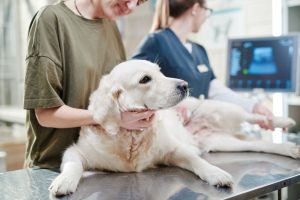 According to Dr. Sue Ettinger (a world-renowned veterinary oncologist who is known by many as Dr. Sue Cancer Vet), up to 40% of all submitted tissue samples to veterinary laboratories are of the skin, and between 20 and 40% of those are reported to be cancerous, or malignant. With those statistics, you can imagine why finding such lumps and lesions on your dog’s body would be important to document and have assessed by your veterinarian.
According to Dr. Sue Ettinger (a world-renowned veterinary oncologist who is known by many as Dr. Sue Cancer Vet), up to 40% of all submitted tissue samples to veterinary laboratories are of the skin, and between 20 and 40% of those are reported to be cancerous, or malignant. With those statistics, you can imagine why finding such lumps and lesions on your dog’s body would be important to document and have assessed by your veterinarian.
Once you find a new lump or lesion on your dog and have it looked at by your veterinarian, then what should you do? Even though your veterinarian knows what types of lumps – benign and malignant – can be found on your dog’s skin, he/she cannot tell you what those lumps actually are without testing them. You cannot feel a lump and know whether or not it is cancerous. Some of the most innocent-looking lumps can be cancerous, and some of the ugliest-looking lumps can turn out to be benign!
Within the past few years, there has been a movement in the veterinary field to actually create guidelines for when to do further testing to determine what a lump or lesion truly is. This movement was created by Dr. Sue Cancer Vet and is called the “See Something, Do Something. Why Wait? Aspirate!” program. What her guidelines boil down to is that if you see a lump, bump, or lesion that is the size of a pea (which happens to measure 1cm wide) or larger and has been present for a month and hasn’t regressed or gone away, have it checked by your veterinarian!
How will your veterinarian determine what that lump or lesion actually is when you bring your dog in to be evaluated?
Your veterinarian will talk with you about performing an “FNA” – fine needle aspirate – of the lump. Your veterinarian will take a needle and syringe and remove some cellular material from the lump and place that material on a microscope slide. Sometimes, they may look at the sample right at the veterinary clinic, and sometimes, they may prefer to send the sample out to be read by a board-certified veterinary pathologist.
If the FNA comes back as non-diagnostic (meaning that the cells were not able to be identified), your veterinarian may choose to either repeat the FNA or recommend that a small biopsy (or piece of tissue) of the lump be sent away for testing.
Many dogs with cancerous lumps or bumps on or underneath the skin can be cured with surgery alone when caught early enough!
Lymph Node Swelling
Just like with humans, lymph nodes provide a variety of functions to keep the body healthy and their function may be an indicator of an underlying health issue, such as cancer.
A pet owner may bring his/her dog to the vet because a lump or bump is found underneath the dog’s jawline. What this lump or bump often turns out to be is a lymph node. Enlarged lymph nodes can be a symptom of an infection, but they can also be a symptom of cancer, the most common of which is lymphoma.
Lymphoma is an aggressive form of cancer that involves the transformation of lymphocytes (a type of white blood cell) into a cancerous form. It is also one of the most common forms of cancer that are seen in dogs. It is rarely curative, but it is highly responsive to chemotherapy.
It is important to know where your dog’s lymph nodes are so that you can monitor them for changes in size. There are many lymph nodes within your dog’s body that you cannot feel and therefore cannot monitor. But, there are 5 sets of lymph nodes underneath the skin that can be monitored. These “peripheral” lymph nodes include:
- SUBMANDIBULAR, found underneath the jawline on either side
- PRESCAPULAR, found in front of the shoulder on either side
- AXILLARY, found in the armpit on either side
- INGUINAL, found in the groin area on either side
- POPLITEAL, found behind the knee on the back of the leg on either side
Usually, you can feel the submandibular and popliteal lymph nodes on your dog fairly easily. Knowing what they feel like now when they are small and normal-sized will help you to notice later on if they seem to be larger and in need of veterinary attention.
Lameness
Limping is a very commonplace symptom of pain in dogs, especially aging dogs! There are many possible reasons why your dog may limp: arthritis, trauma, soft tissue injury, and Lyme Disease, to name a few!
One additional possible cause of lameness is cancer! Osteosarcoma is probably the most common form of bone cancer that affects dogs. It affects large and giant breed dogs more commonly than smaller breed dogs, but it can occur in any breed of dog at any age.
While osteosarcoma can occur in virtually any bone in your dog’s body, it preferentially likes sites “away from the elbow” and “towards the knee.” In other words, veterinarians are going to more commonly diagnose it in the shoulder and wrist in the forelimb and in the knee in the hind limb.
If your dog is showing persistent or worsening signs of lameness, make sure to have it addressed by your veterinarian.
Loss of Appetite
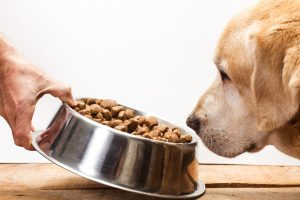 Lack of appetite, when associated with cancer, may be sudden in onset, but it is oftentimes more gradual. In many cases, your dog may not eat his/her regular food but may devour treats and table food happily.
Lack of appetite, when associated with cancer, may be sudden in onset, but it is oftentimes more gradual. In many cases, your dog may not eat his/her regular food but may devour treats and table food happily.
This lack of appetite may be related to nausea, pain, or discomfort related to cancer, or something that veterinarians have termed “cancer cachexia.” Cancer cachexia is actually a change in the body’s metabolism of carbohydrates, fats, and proteins. The cancer cells basically starve the normal cells in the body, leading to poor energy usage and loss of the pet’s normal muscle mass.
Lethargy
You might notice that your dog is tired, has reduced energy, and may be less willing to exercise and play. While dogs can get tired just like us, if this is a recurring issue it could be that the dog’s energy is being used to fight off cancer. If your dog seems to sleep more often and is less willing to do physical activities it usually loves, it may make sense to visit your veterinary clinic.
Loss of Weight
Weight loss associated with cancer usually occurs slowly over time. You may not even recognize that it is happening early on. This type of weight loss is usually accompanied by a loss of lean muscle mass. If you notice your dog has gotten thinner without a change in diet or exercise, take your dog to the vet as a precautionary measure to be tested should be done.
“Loud” Odor
This basically means that you are noticing an abnormal smell coming from your dog. It may be originating from your dog’s mouth or intestinal tract. Perhaps, there is a mass growing inside the mouth that hasn’t been detected yet. Or, perhaps, your dog is nauseated by something going on in the intestinal tract.
Loss of Normal Body Functions
This is a more generalized warning sign and may encompass a collection of symptoms that may/may not occur: increased or uncontrolled urination; loose stool/diarrhea; uncontrolled bowel movements; increased thirst (which typically leads back to increased urination); vomiting; and drooling.
Bleeding/Bloody Discharge
Since cancer can affect virtually any portion of the body, you could potentially see bleeding or bloody discharge from any opening, even the eyes. Perhaps the most difficult form of bleeding to spot is internal bleeding. It obviously isn’t something that you can simply visualize.
If your dog seems overly tired or weak or has trouble standing up, make sure to check his/her gum color. Lift the lips and check to see if the gums are still nice and pink or if they are pale or white. If they are pale, it may indicate internal bleeding, and that requires an emergency visit no matter what time of the day or night it is.
Labored Breathing
Labored breathing may occur because of something going on with the nose or throat (such as an obstruction from a mass or extremely large submandibular lymph nodes), the lungs, or the heart.
What To Do If Your Dog Shows Signs Of Cancer
None of the above symptoms indicate cancer 100% of the time. Cancer is just one of the many possibilities. So many other diseases could be the culprit.
The most important thing to remember is that if you see any of these early warning signs of cancer in dogs listed above, don’t delay in taking your dog to his/her veterinarian! Hopefully, these symptoms that you are noticing won’t amount to anything serious. BUT, if they turn out to be serious, the earlier they are addressed, the higher the percentage will be for successful treatment and possibly a cure!
If you remember nothing else from this article, remember this:
YOU are the biggest key to your pet’s well-being. YOU are on the forefront, “in the trenches,” if you will. You see your dog on a daily basis and are the most likely to pick up on subtle changes going on with him/her. If you notice a change or a problem that you are unsure about – even if it doesn’t fall within the list of common warning signs – act on it sooner rather than later. Take your dog to his/her veterinarian for a check-up. You may just end up being your dog’s hero…
Why You Need To Know How To Check Your Dog For Cancer
Organizations such as the National Canine Cancer Foundation, the Puppy Up Foundation, and the Morris Animal Foundation help to fund research that gives scientists a better understanding of how different cancers work. These discoveries can in turn lead scientists to unravel what treatment options may work against a particular form of cancer as well as how a particular form of cancer may be prevented in the first place. With the continuation of such research programs, hopefully, that statistic of 33% of dogs being diagnosed with cancer will decrease dramatically.
In the meantime, YOU have the power to assist in reducing that second, even more alarming, statistic! Yes, YOU.
Your veterinarian or veterinary oncologist may be able to offer new, improved, or cutting-edge treatment options for your dog (and thus also bring down that second statistic), but he or she won’t be able to make a treatment plan if your dog isn’t examined and diagnosed, to begin with. It is so important to know the early signs of cancer in dogs.
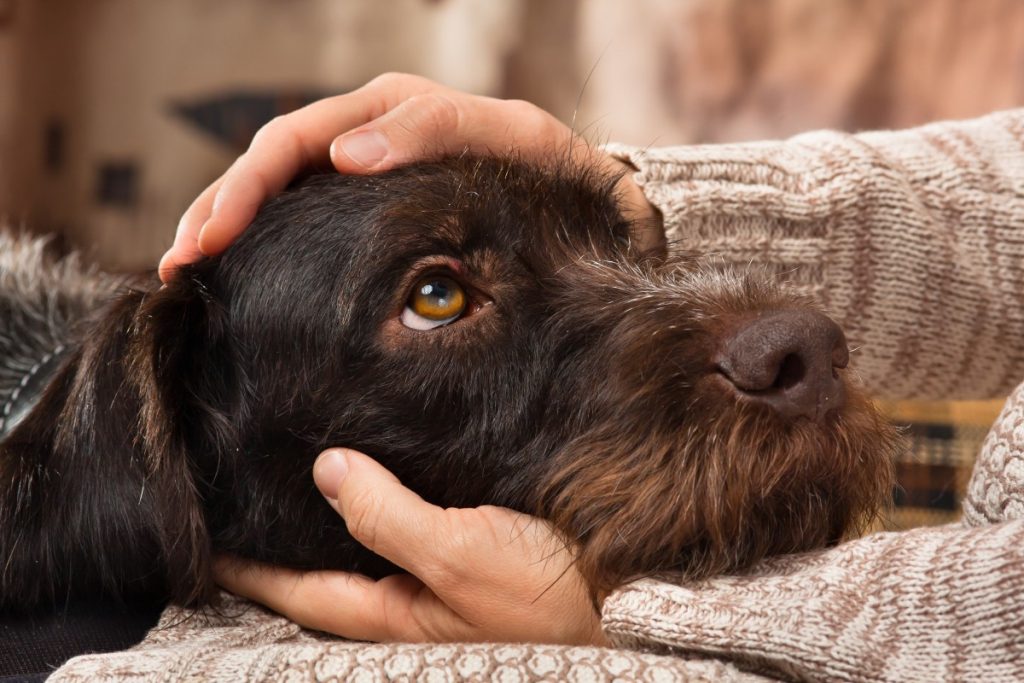 YOUR knowledge and ability to sense when there is something wrong going on with your dog are crucial in assisting your veterinarian in diagnosing cancer (and other diseases, for that matter) in its earlier stages. So, how do you know the early signs of cancer in dogs?
YOUR knowledge and ability to sense when there is something wrong going on with your dog are crucial in assisting your veterinarian in diagnosing cancer (and other diseases, for that matter) in its earlier stages. So, how do you know the early signs of cancer in dogs?
The veterinary profession gets better every year at diagnosing and treating different forms of cancer. However, as a whole, it is not always very good at educating pet owners about what signs and symptoms to watch out for that may prompt them to bring their pets in to be examined.
If the veterinary profession as a whole were to effectively educate its clients about the importance of preventative medicine and what signs and symptoms to watch out for that are considered “abnormal” in their pets, then those same pets would more likely be taken to their veterinarian promptly and be diagnosed with their disease earlier. An earlier diagnosis in many cases will allow for more effective treatment options, better outcomes, and a better quality of life.
But, pet owners need to be educated first so that they know what is considered “abnormal.” If people don’t know what they are looking for, to begin with, they may miss signs and symptoms of disease in their pets. How can you advocate for your pup’s health if you don’t know what the early signs of cancer in a dog look like?
Education of pet owners is crucial to detecting pet cancer in its earliest stages. The following list is considered among many to include the most common warning signs of cancer in dogs and cats. You don’t necessarily need to memorize it – you can reference it online at any time! But, it is important to be aware that this list exists in the first place! It is a fairly common list that has circulated through many different organizations dedicated to pet cancer education.
Other Articles of Interest:
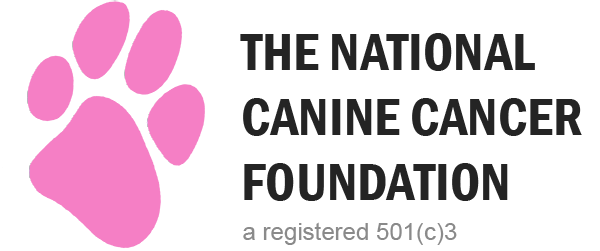
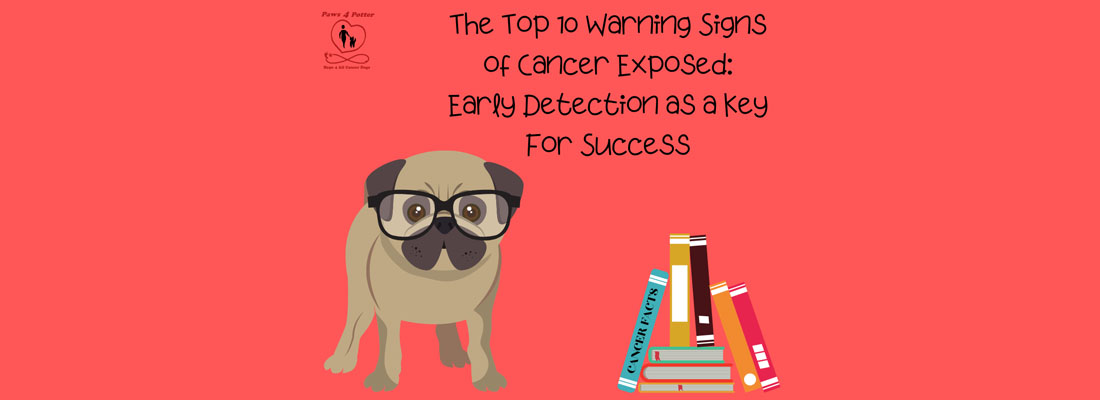

Recent Comments